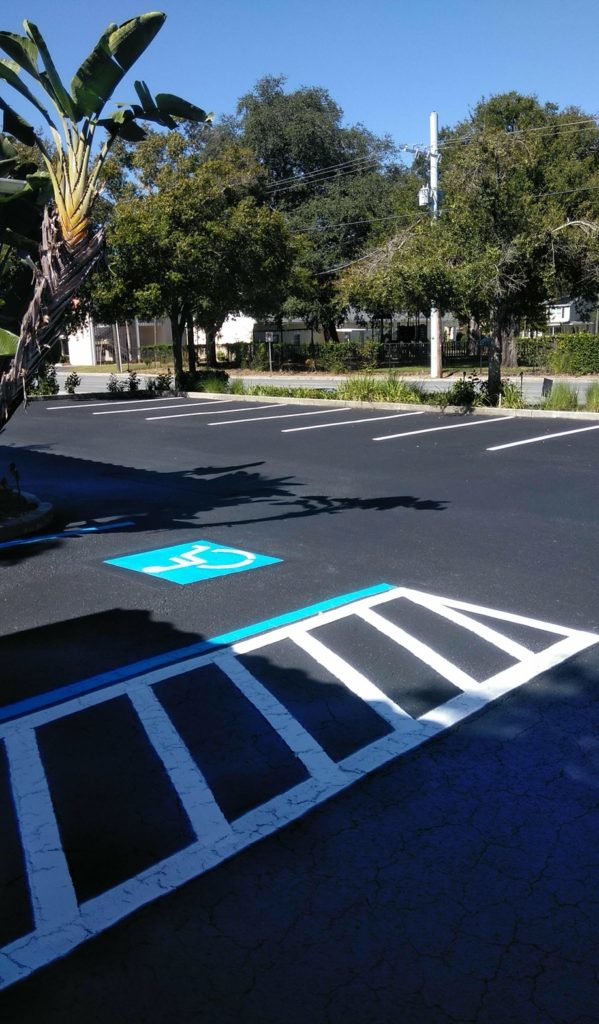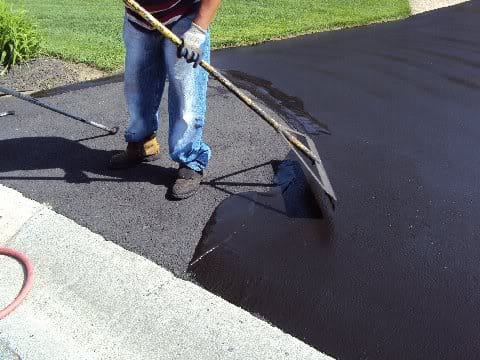Enhance Toughness: Hot Mix Asphalt Sealing for Angled Parking Frameworks
Enhance Toughness: Hot Mix Asphalt Sealing for Angled Parking Frameworks
Blog Article
Hot Mix Asphalt: A Lasting Remedy for Sidewalk
Warm Mix Asphalt (HMA) has actually arised as a leading lasting selection for sidewalk remedies, supplying a myriad of cutting-edge modern technologies and environmental benefits. Its capability to lower and recycle products power usage provides an engaging case for its fostering in roadway building and construction tasks. The lasting efficiency and toughness of HMA make it a recommended option for infrastructure development. As the demand for environmentally friendly building techniques grows, checking out the subtleties of HMA's sustainability can offer useful understandings into the future of sidewalk solutions.
Environmental Benefits of Warm Mix Asphalt

Furthermore, Warm Mix Asphalt helps to mitigate metropolitan heat island impacts. Its dark color absorbs sunlight, reducing the quantity of warm reflected back into the environment compared to lighter-colored pavements. This can lower ambient temperatures in city areas, reducing the need for air conditioning and inevitably minimizing energy intake.
Additionally, Hot Mix Asphalt adds to boosted stormwater management. Its porous nature enables water to penetrate the sidewalk and recharge groundwater products, reducing runoff and the danger of flooding. These ecological advantages make Warm Mix Asphalt a sustainable option for leading roads and freeways.
Power Performance in HMA Manufacturing
Is energy effectiveness an essential factor in the production of Warm Mix Asphalt (HMA)? Absolutely. Energy plays a substantial duty in the manufacturing of HMA, affecting both expense and ecological sustainability. One vital facet of power performance in HMA manufacturing is using warm mix asphalt (WMA) innovations (regrading). WMA enables the mixing and positioning of asphalt at reduced temperatures contrasted to conventional warm mix asphalt, leading to minimized energy consumption during production. This process not just lowers fuel usage however likewise reduces greenhouse gas emissions, making it a more eco-friendly choice.
Moreover, advancements in plant innovations have actually led to more energy-efficient HMA production procedures. By enhancing power use in HMA production, the market can lower its carbon footprint while preserving high-quality pavement materials.
Recyclability of Warm Mix Asphalt
The recyclability of Warm Mix Asphalt (HMA) is an essential element of its sustainability and lasting ecological impact. HMA is among one of the most recycled products in the United States, with over 100 million heaps of recovered asphalt sidewalk (RAP) being reused every year in new pavement building and construction. Recycling HMA provides a number of ecological benefits, such as lowering the need for Full Article virgin materials, decreasing power usage throughout production, and reducing the amount of waste sent out to land fills.
The process of recycling HMA entails grating the existing sidewalk, crushing it into smaller sized pieces, and blending it with brand-new accumulation and asphalt binder to create a recycled mix. This recycled mix can commonly carry out in addition to or even far better than conventional HMA, while calling for less raw materials and generating reduced greenhouse gas exhausts. By integrating RAP right into new pavement tasks, road firms can save all-natural resources, reduce expenses, and decrease the ecological impact of road construction and upkeep tasks. Generally, the recyclability of HMA plays a considerable duty in advertising lasting methods within the sidewalk sector.

Long-Term Performance of HMA
Asphalt pavements demonstrate longevity and resilience over an extended duration, reflecting the long-lasting performance of Hot Mix Asphalt (HMA) The long life of HMA can be credited to its ability to hold up against rush hour loads, rough climate problems, and the results of aging. Researches have actually revealed that well-designed and effectively created HMA sidewalks can last for 20 years or even more with regular upkeep. The secret to optimizing the long-lasting performance of HMA lies in utilizing high-grade products, adhering to ideal techniques in building, and carrying out effective maintenance techniques. Proper water drainage, regular examinations, and prompt repair services are necessary for maintaining the architectural integrity of HMA sidewalks over time. Furthermore, developments in HMA innovation, such as making use of polymer-modified binders and cozy mix asphalt, have actually even more boosted the resilience and longevity of HMA sidewalks. By prioritizing high quality building and construction and upkeep techniques, HMA proceeds to show itself as a cost-efficient and sustainable service for durable pavement framework.

HMA: Toughness and Sustainability
Demonstrating both durability and sustainability, useful content Hot Mix Asphalt (HMA) has become a foundation in the construction of lasting sidewalk frameworks - commercial parking lot paving. HMA's toughness stems from its capability to withstand hefty tons, extreme climate condition, and high traffic volumes, making it a trustworthy selection for roads, highways, and airport terminal runways. The structure of HMA, which generally consists of aggregates, binder, and filler, plays an essential function in boosting its longevity and resistance to put on and tear
In addition, HMA's sustainability depends on its recyclability and energy-efficient production process. The capability to recycle reclaimed asphalt pavement (RAP) in new HMA mixtures decreases the need for virgin products and minimizes the environmental impact of sidewalk building and construction and maintenance. Additionally, the energy effectiveness of generating HMA hinges on its lower mixing temperatures contrasted to various other sidewalk products, leading to minimized power intake and greenhouse gas emissions.
Conclusion
In conclusion, hot mix asphalt (HMA) uses a sustainable solution for sidewalk with its ecologically friendly characteristics. HMA's recyclability, energy efficiency in manufacturing, and long-lasting visit this website longevity make it an eco-friendly selection for road building.
HMA is one of the most recycled materials in the United States, with over 100 million loads of reclaimed asphalt sidewalk (RAP) being recycled every year in new sidewalk building and construction.The process of reusing HMA includes milling the existing sidewalk, squashing it into smaller sized pieces, and blending it with new accumulation and asphalt binder to create a recycled mix.Asphalt sidewalks show resilience and strength over a prolonged duration, reflecting the lasting performance of Warm Mix Asphalt (HMA) Additionally, innovations in HMA innovation, such as the usage of polymer-modified binders and warm mix asphalt, have actually better boosted the sturdiness and durability of HMA sidewalks. The capability to recycle recovered asphalt sidewalk (RAP) in new HMA mixes decreases the need for virgin materials and lessens the ecological impact of pavement building and upkeep.
Report this page